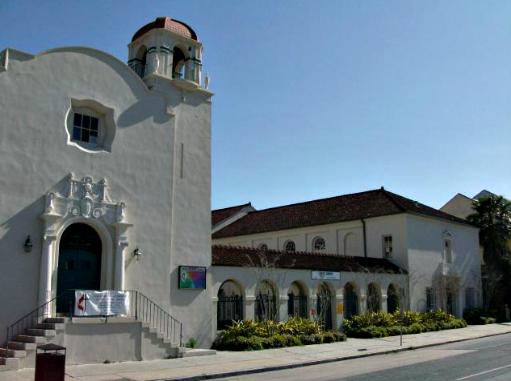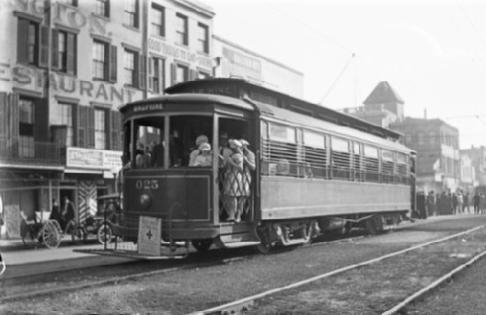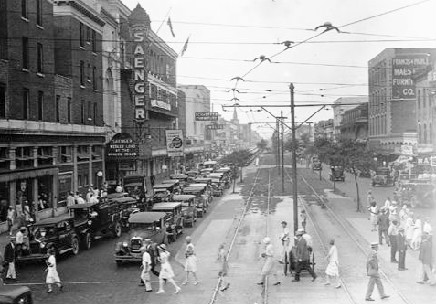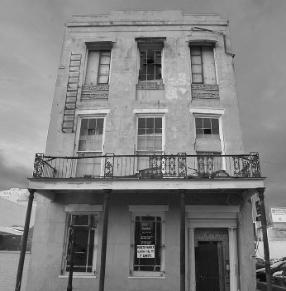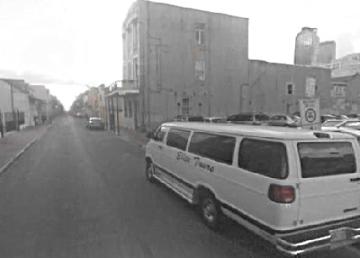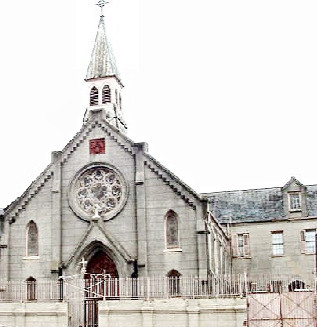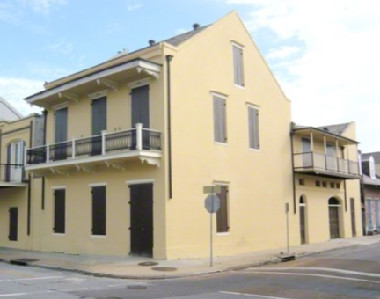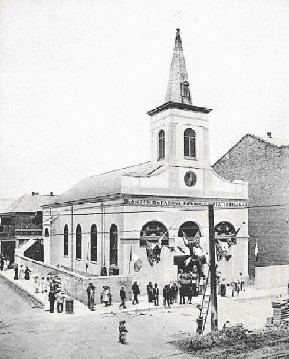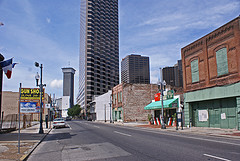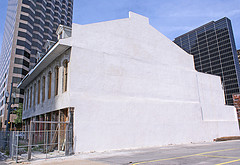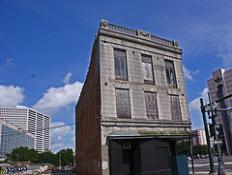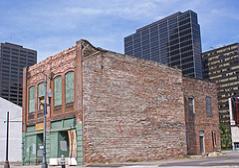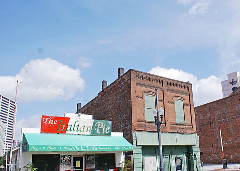| Above, streetcar on N. Rampart Street, 1918. |
| Rampart Street |
| On Rampart Street in New Orleans, Somebody's callin' for me, I can hear that gang of mine Singin' sweet harmony. How my heart does beat To get to Rampart Street! New Orleans, New Orleans, I'm comin' home to you, New Orleans, New Orleans, ain't nothin' else to do. I'm gonna tell you true - I'm not bluffin' - there ain't nothin' I love like I love you! |
| Vintage and Current Images of Rampart Street |
| Looking down Rampart Street from Canal Street, 1930 |
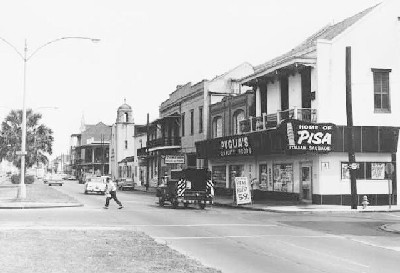
| Above, N. Rampart at Ursuline Street, Puglia's Grocery on corner, St. Mark's can be seen in distance; 1960. Below, same corner today, the grocery is now a residence. |
| Rampart at St. Ann Street, Gino's Restaurant, 1960 |
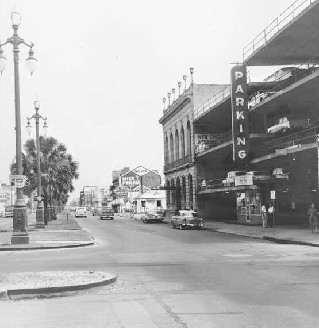
| Conti Street at N. Rampart - During Storyville's heyday, this was the high class bordello of Norma Wallace; it was later occupied by photographer, E. C. Bellocq, famous for his haunting photographs of Storyville's prostitutes. It now stands, forlorn and abandoned, in the middle of a large commercial parking lot, one of only a handful of buildings remaining from that district's era. Its only visitors are tour buses like the one shown approaching it above, driving by to give tourists a quick look at a building with a colorful history. |
| N. Rampart at Conti Street, 1960 |
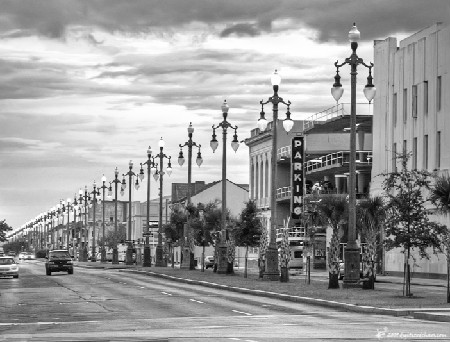
| The photo at the very top of the page of N. Rampart near Iberville is a current shot; the photo above shows the same location in 1960. |
| 1200 block N. Rampart - Formerly, the chapel and convent of the Discalced Carmelites of New Orleans, now, a Catholic Charismatic church & retreat center. The walled complex was constructed in 1895 by architect James Freret and builder Fred Beusch. The Carmelite nuns left the complex in 1971, after upkeep of the buildings became too difficult for them. Discalced Carmelite nuns are a contemplative order who live in strictly cloistered monasteries. The nuns who lived behind these walls spent most of their time in intercessory prayer for mankind, but they were, also, artists and artisans; they sewed vestments and linens; baked hosts and bread; planted their own gardens; they translated and published books for English speaking Carmelite communities throughout the world. The first Carmelite nuns arrived in New Orleans in 1877. |
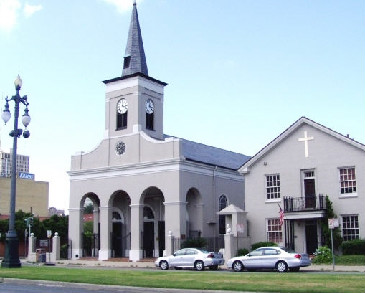
| 300 block N. Rampart - The old Yellow Fever Mortuary Chapel - Built in 1826 as a burial church for Yellow Fever victims, it's the oldest surviving church in the city. Now, Our Lady of Guadalupe Church, it's the official chapel of the New Orleans Police and Fire Departments. Link at bottom of page will take you to my webpage on the old mortuary chapel. Photo on left, 1905; photo on right, current. |
| 1100 block N. Rampart - St. Mark's United Methodist Church & Community Center - St. Mark's started out as an outreach program in the Irish Channel in 1909, and in its hundred year history has maintained an emphasis on outreach and an empathetic, reconciling ministry. It's offered shelter to volunteers coming to help rebuild the city since the levee failures; it provides meals to the homeless every Sunday after worship service and provides other community outreach programs. The current church was built in 1924 and it's a landmark in the neighborhood. |
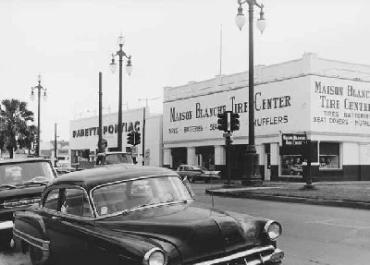
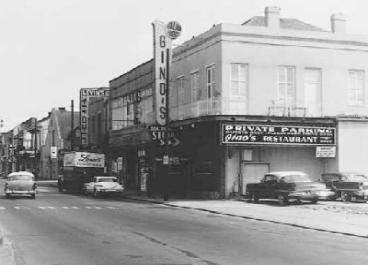
| The recent photos below were taken in the 400 block of S. Rampart. A hundred years ago, this block on South Rampart was part of a popular African-American entertainment district called "Back of Town." Many great Jazz musicians of that era played in the saloons and dancehalls on this street and the saloons, dancehalls and brothels of the Storyville District across Canal Street. These included early Jazz greats such as Buddy Bolden, Jelly Roll Morton, Louis Armstrong and many more. The photos below are courtesy of Anthony Posey. Mr. Posey has done yeoman's work in photo-chronicling historic landmarks and neighborhoods of New Orleans and he is generous to share his efforts. Click on the images below to see a larger picture. |
| Block with a history: Building on right, Iroquois Theater; red brick building further down - Karnofsky's store, where Louis Armstrong worked as a young boy; the white building at end of block, Little Gem Saloon. |
| Karnofsky's store |
| Little Gem Saloon |
| Eagle Saloon downstairs, dancehall upstairs. I understand this building has been purchased and there are plans to restore it. |
Many thanks to Arlene Dehring for the photo at the top of the page and the photo of the Carmelite convent. The link to this page is: http://old-new-orleans.com/NO_Rampart.html Storyville and the Birth of Jazz Old Yellow Fever Mortuary Chapel Back to Old New Orleans Whispers - Home |
| On the right, Iroquois Theater |
